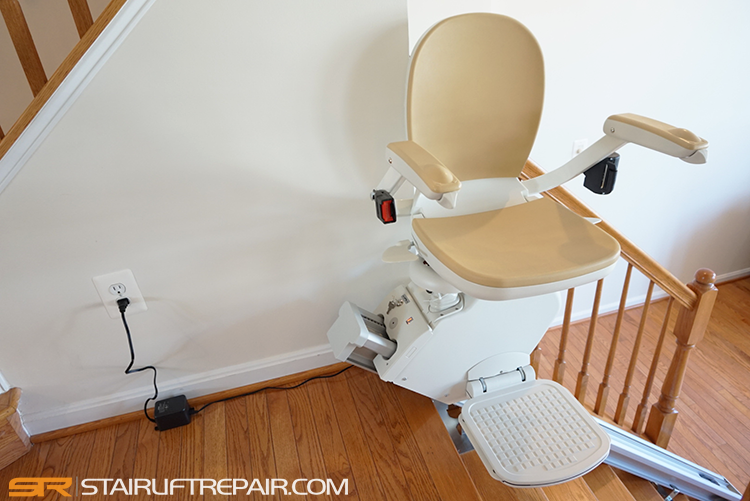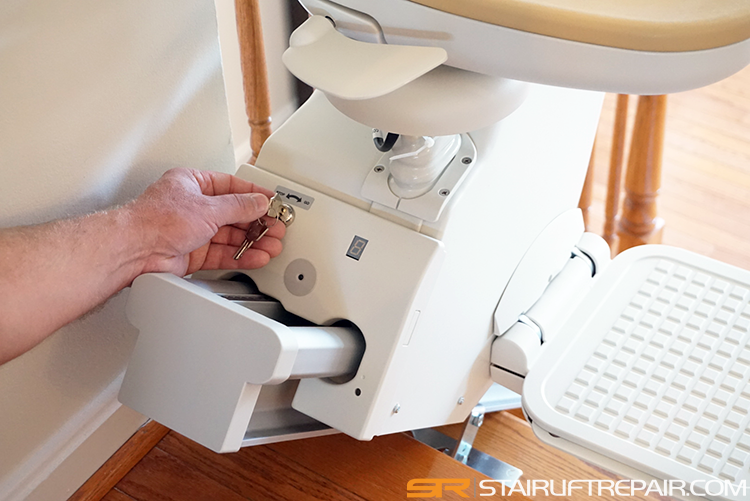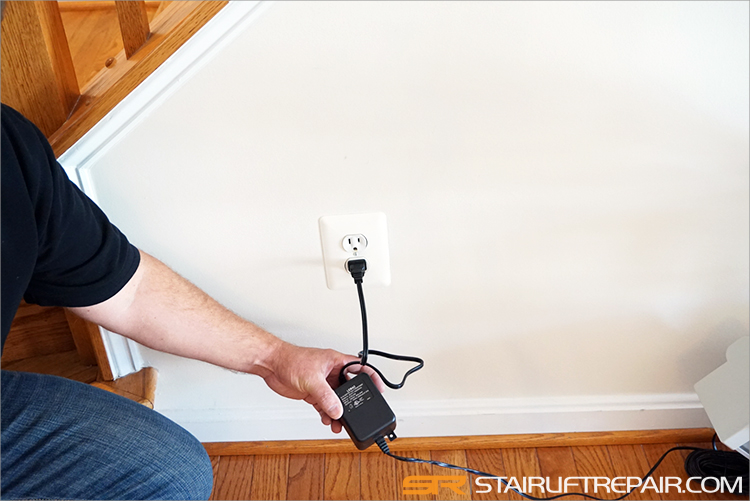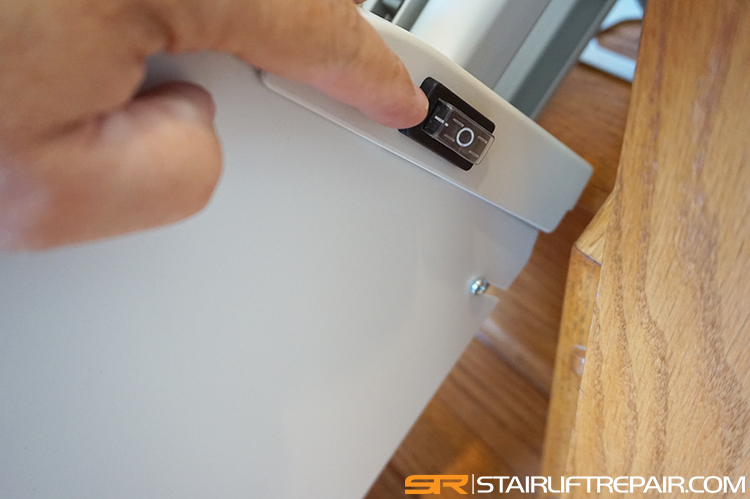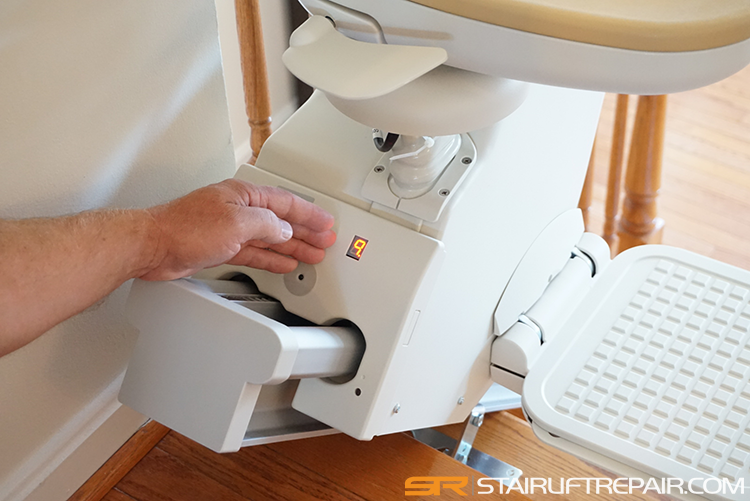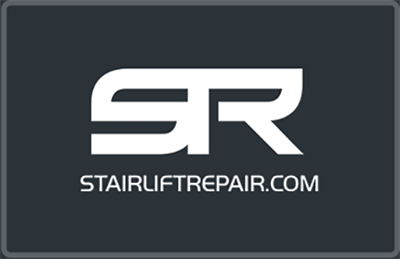Troubleshooting tips, common stair lift problems, and things to check. If your stairlift isn’t working, making a strange noise or won’t stop beeping there are a few things you can try. These items may save you a repair call and even get your lift up and running again. The list of the most common issues to check before you call for service:
Checking the following items could get your stairlift moving again.
- Key switch
- Power supply
- Battery disconnect switch
- Error codes
- Armrests
- Footrest
- Quick video overview
Key Switch
While it may seem obvious we often receive calls to find the key switch has been accidentally turned off. Depending on the lift model you have the key switch can be located in a few different places. One of the most common locations for the key switch is on the top landing chassis side as shown on this Acorn chairlift. Other places key switches are located are on the chair armrest and lower front cover. Once you locate the key switch verify operation by turning it off and then back on. There are many times a key switch can appear to be in the on position when it is actually turned just slightly to the off position.
Power Supply
Confirm the power supply is plugged into a working outlet. Most power supplies will look similar to the one in this picture. When a chairlift is beeping and won’t stop it is typically caused by a power supply issue. If the power supply is plugged in it may be the outlet is off, check to see if the outlet is a switched outlet or if the main breaker has tripped. If it’s a switched outlet you will want to have the power supply plugged into a dedicated outlet that is always on. Also, stairlifts are operated and controlled by circuits that should always be protected by a surge protector. After confirming the outlet is supplying power and the power supply is plugged in check the lift for beeping or chirping noises.
Battery Disconnect Switch
The battery disconnect switch is the main shut-off switch for the lift. The battery disconnect switch has a different function than the key switch. The purpose of this switch is to remove power from the PCB and disable all functions of the lift. Turning this switch off will also stop the lift from beeping or chirping until repaired. Locating this switch can sometimes be difficult and the switch location will vary depending on the lift manufacturer. Typically they are located on the lift in a place that won’t be knocked into easily. This picture is the main disconnect or battery isolation switch for the Acorn 130 stairlift model. This switch is located on the front top panel adjacent to the diagnostics display of the HandiCare Model 1000 stairlift.
The main shut-off switch shown here is for the Bruno CRE-2110. The switch is located on the back of the lift and will remove all power supplied by the batteries. The shut-off switch on the Bruno model also acts as a breaker or overload protection and can automatically turn off if the motor draws too much current.
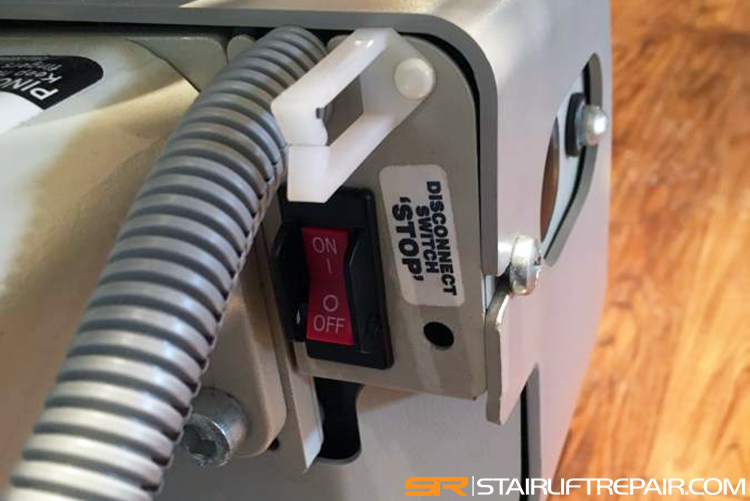
Error Codes
Most stair lifts have an error code or diagnostics display located on the lift. It’s a good idea to read your owner’s manual and be at least somewhat familiar with these codes. After you locate the diagnostics display check to see what error code or codes are showing to diagnose common stairlift problems. Look up the code in your user manual for more details about the error. Some codes will indicate a simple problem and some will refer you to call a local stair lift repair company. It is important to never take the cover off a lift to attempt a repair. The following is a list of the most common lifts with additional information on fault error codes and trouble indicator lights.
- Acorn stairlift error codes
- Harmar Pinnacle checklist
- Sterling fault codes
- Summit stairlift troubleshooting
Armrest
Most chairlifts are equipped with armrest sensors that can detect if the chair arms are up or down in the normal operating position. For the lift to move the armrest should be folded down in a horizontal position. The armrest can be compared to a main sensor in terms of operation and if provided will not let a lift move in either direction until the armrest is lowered.
Footrest
Similar to the armrest the footrest also has sensors that can stop the lift from moving. These sensors are directional and are typically located on a spring-loaded bar, plate, or tab surrounding the footrest. These sensors can become stuck or jammed. Each sensor will stop the lift in a specific direction and are referred to as directional sensors. This will allow a chair to move in the opposite direction of an obstruction. For example, if the chair was traveling down the stairs and the footrest hit an obstruction you would be able to move the lift back up the stairs. This is what guides in determining which sensor to check.
Stairlift Repairs
These are items that can easily be checked and do not require any tools. Many common stairlift problems can be fixed quickly without a service call. Remember we do not recommend opening any lift covers and for safety, only trained technicians should install, adjust, or service any mechanical or electrical device on stairlift equipment. Also, take a look at our stair lift quick check video below. If you still need stair lift repair service in Northern Virginia, Washington DC and Maryland area give us a call at 866-721-6004. If you live outside the DC metro location check our other service locations.
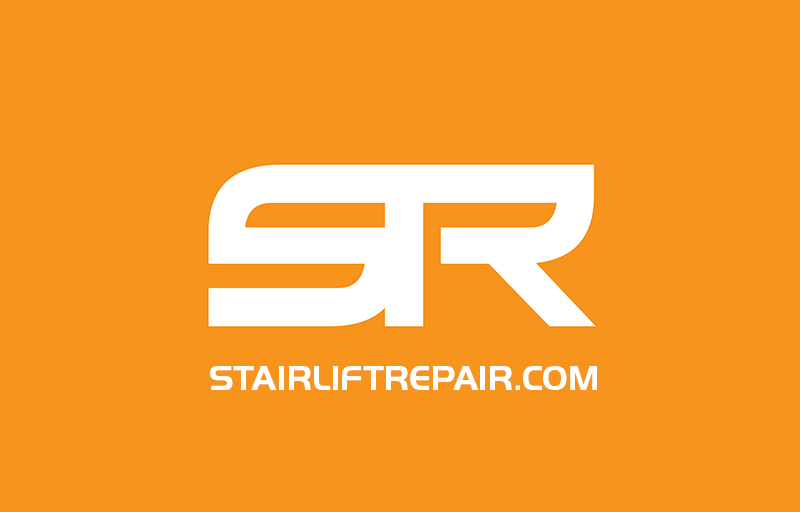
Things to check quick video overview
This quick video overview will demonstrate common issues with chair lifts and how to check them.


